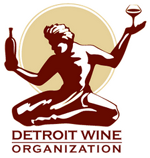This is John Jonna from the Detroit Wine Organization with some tips on “Wine Speak” – the language of wine. Wine sommeliers, the stewards of wine, have their own language when it comes to describing taste, textures, and aromas of the myriad of wines they evaluate. I would like to give some terms that you can use yourself, and help you to understand them if they are being expounded upon by a wine expert.
COLOR/HUE
In judging any wine, color is your first indicator, and there are descriptors that are common. I like to describe color in terms of “hue”, where the deep, dark colors imply a richer, more intense wine, maybe with higher alcohol; and a lighter, more bright and iridescent hue would imply a softer, less tannic wine. You should carefully study the hue of any wine you try, and make a mental note of it.
In white wines, I prefer to use the term “ clarity”, which tells me the wine has a hue that is clean, not cloudy, and reflects light with “brilliance”. A brownish tinge on the rim of a tilted glass, called the “robe” or “meniscus”, could indicate an oxidized wine, which could have suffered from heat or air exposure.
AROMA/NOSE
In terms of aroma, your primary goal should be to first search for any aromas that would show a “flaw” in the wine, like nail polish, vinegar, sulfur, cabbage, cardboard, or wet basement. Any of these scents would tell you that that the wine suffered from improper vivification, or is “tainted” or “corked”. The term “corked” is wine lingo for any cork that has been infected by bad bacteria (TCA). It’s rare, and with the use of stew caps, which I highly approve of for wines meant to be consumed young, is being diminished.
If a wine has a pleasing and appealing “nose,” then all is fine.
TASTE
In terms of taste, I like to use terms like “fruit forward”, indicating soft, easy drinking wines; “elegant”, meaning gentle, moderate acid; and “racy”, meaning high acid wine with lemon/lime notes.
Red wines high in alcohol and tannin are “big”, red wines that are mild and low acid are “gentle”, and really excellent, high quality wine can have a “long, lingering finish”.
Wines that don’t show aroma or flavor could be called “dumb”, “closed”, or “lacking personality”.
Some other words we might use: “attack”, “angular”, “ limpid”, “balanced”, “disjointed’, “nervous”.
Can you figure them out? Questions? Feel free to comment below or send us an email, and I will be happy to answer them!
I look forward to meeting you at DWO’s next ‘Wine Down Wednesday’, on Wednesday, August 23rd at The Bird and The Bread in Birmingham. I’ll be leading a discussion and tasting on “Tantalizing Reds and Rosés”. We hope to see you there!
Cheers!

John Jonna
John is a member of the DWO Board of Directors. He is the owner of the “Bird and the Bread” in Birmingham along with “Vinotecca” in Royal Oak and “Vinology” in Ann Arbor. John also has an in-depth knowledge of wine, cheese and business.


Leave A Comment